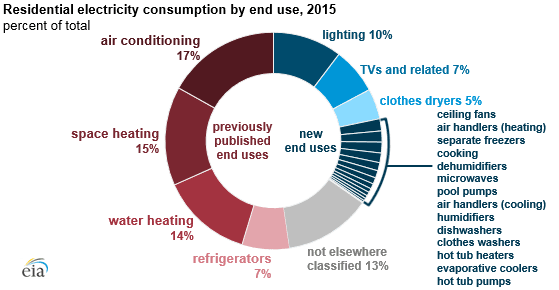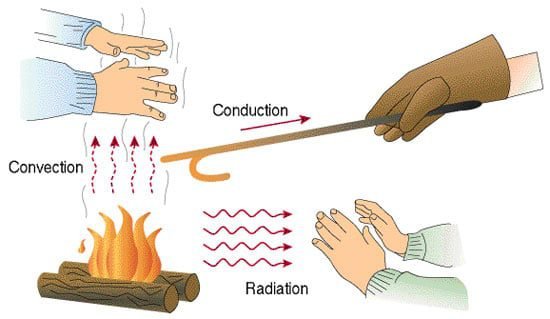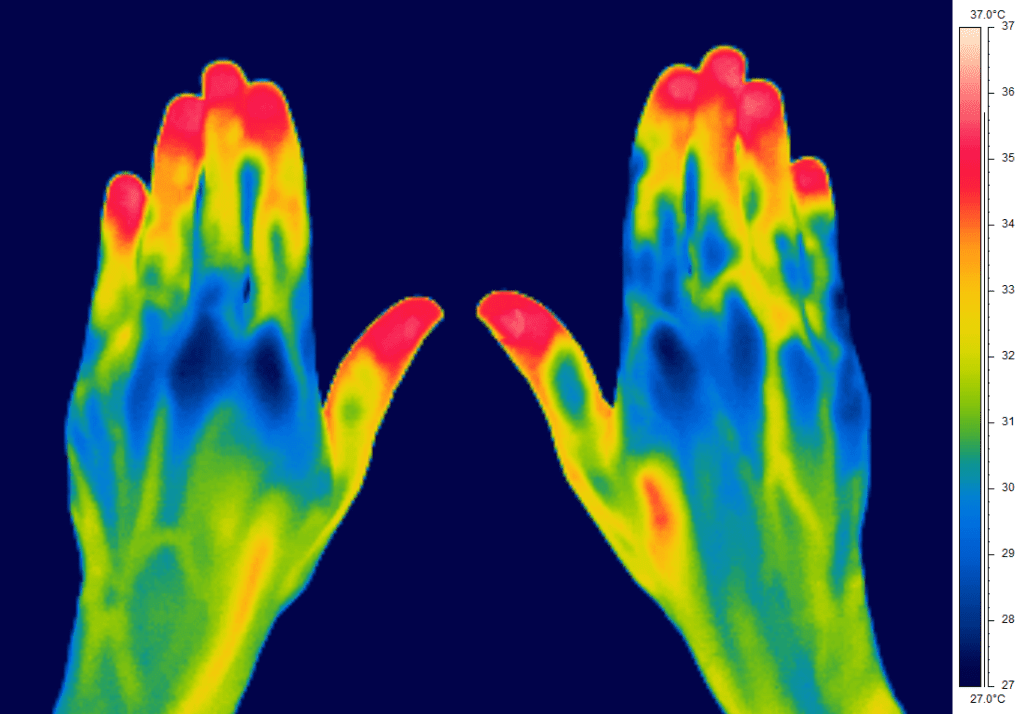One of the most energy-consuming processes that affect the use of energy in homes is the transfer of heat in and out of the building. Sometimes you want to intentionally move heat, and other times you want to slow down its movement.
Both cases are important and deserve attention and planning when designing and building a modular or container home. The average residence in the USA uses most of its electricity for heating and cooling (source).
Have you ever touched a hot stove, used a hair dryer, or felt the warmth of a fire on a cold night? If so, you have an intuitive sense of heat transfer. In this article, we will discuss the physics behind heat transfer and its important implications for container homes.
While heat transfer itself is a bit technical, we believe it is crucial for you to have an understanding of how it works. The movement of heat directly affects poor decisions that cost thousands of dollars and affects your overall habitability and comfort in your container home.
We have trimmed the irrelevant details and provided clear examples to help you navigate some of these important decisions.
What is “heat,” exactly?
Before you can understand heat transfer, you need to understand heat. Heat is a form of energy associated with thermal or temperature changes. It always flows from the hotter object to the cooler one, unless it is driven by an external force (such as an air conditioner).
It is important to understand that you cannot add “cold” to something; you can only talk about removing heat. Cold is, therefore, the absence of heat.
An air conditioner does not add coolness to your home; it is removing heat from your home and moving it outside (even though it may be hotter outside than inside). It is similar to how you cannot add darkness to a room; you can only remove light.
The three types of heat transfer
Thermal energy is transferred in three main ways, each of which is important to understand in the context of shipping container structures.
Conduction
Conduction, the simplest form of heat transfer, is how heat moves within a single solid object and also between solid objects in direct contact.
When you touch a hot stove, heat from the burner is transferred to your hand. If you hold a metal spoon in your hand and touch the spoon to the burner, your hand will heat up because heat is conducted through the spoon. However, if you use a kitchen glove (insulation), much less of that thermal energy will reach your hand.
In a container, the outer corrugated metal is usually the hottest (in summer) or coldest (in winter) part of the house, as it is closest to the outside environment.
Anything touching this outer metal layer, such as insulation, wall studs, windows, door frames, etc., will also have this heat transmitted through conduction. Conduction is where the concept of thermal bridging comes into play.
Thermal bridging
Thermal bridging occurs when a section of a wall system has a higher conductivity (or lower insulation capacity) than the surrounding material. This creates a “path of least resistance” for the conduction of heat flow. This, in turn, reduces the overall insulation capacity of the entire wall system.
For example, if you use metal wall studs that attach to the interior of the container and have direct metal-to-metal contact, heat will conduct from the outer metal to the studs. The same thing happens with wood studs, except wood is much less effective as a conductor. Therefore, less heat will migrate into your building.
Another option is to place more insulating material between the container’s corrugated metal and the metal wall studs. If you are interested in knowing how well construction materials insulate, this is a great resource.
The key point is that you want to separate your container’s interior space from the outer metal with as much insulation as possible. But remember that insulation only works when it is between the inner wall and the outer corrugated metal.
Any material that thermally “bridges” this gap through or around the insulation is reducing the effect of your insulation, and you should take steps to minimize this as much as possible. Otherwise, your expensive insulation will be wasted.
Post that are touching the exterior metal of the container can “bridge” heat into the interior of the drywall panel by providing a conducting path through the insulation.
Convection
Convection is the second mode of heat transfer and can be generally defined as the transfer of heat between a solid and a fluid.
“Fluid” is an engineering term that represents both liquids (such as water) and gases (such as air). In reality, there are two types of convection, with only a slight difference between them.
A) Natural convection
A hot object exposed to a fluid will naturally heat it up. Due to the changes in density (and thus buoyancy) that correlate with temperature increases, the hot fluid will naturally move away from the hot object in a convective current, and cooler fluid will take its place. This leads to the common saying “heat rises.”
If you’ve ever held your hand above a stove and noticed that the air is warmer than anywhere else in the room, you’ve experienced natural convection.
B) Forced convection
A hot object that has a fluid moved over it by an external force, such as a fan or pump. If you’ve ever used a hair dryer, this is an example of forced convection, as an electric fan is forcing air over an electric heating element.
Heat Transfer by Convection in Containers
In the summer, the heat from the roof of your container increases the temperature of the air surrounding it through natural convection (we’ll explain why the roof gets hot later).
This hot air rises in a column over the container, continuously being replaced by slightly cooler ambient air in the atmosphere.
In traditional construction with peaked roofs, placing ventilation grilles at the top of the roof (and intake vents at the bottom) is a way to allow hot air to escape from your attic through natural convection.
Ideally, the temperature in your attic wouldn’t be higher than the ambient temperature outside the house, but without this ventilation, your attic becomes an oven.
Natural convection heat flow through roof vents in traditional construction.
However, for container homes, this is not particularly practical. Unless you add a pointed roof over the container, a container home will not have an attic or airspace above the insulation in the roof.
Radiation
Radiation is the last of the three modes of heat transfer and is the most difficult to understand. The word radiation usually has a very negative connotation, so let’s start by understanding what radiation is at a high level.
Then, we will discuss the types of radiation that exist. In simple terms, radiation is energy that is transmitted through matter via invisible waves.
Radiation can be divided into two types:
A) Ionizing radiation
The “bad” radiation you hear about that can cause damage to living tissue. It is the reason why you wear a lead vest when you get an X-ray and why humans cannot visit the site of the Chernobyl nuclear reactor accident in Ukraine.
B) Non-ionizing radiation
All other radiations on the electromagnetic spectrum. It includes visible light, radio waves, and many others. The thermal radiation we are discussing here is a type of non-ionizing radiation.
From Crates. Original version in English by Inductiveload – Translation from English version, Public domain, Link
Electromagnetic spectrum including wavelengths of thermal energy (Source)
How thermal radiation is experienced
Most of the thermal radiation we encounter in everyday life is transmitted through the visible and infrared parts of the spectrum (the reasons why are beyond the scope of this article).
If you’ve stood around a bonfire and felt warm even though the air around you was cold, you’ve experienced thermal radiation. The burning wood radiated thermal energy that was absorbed by your body, increasing the temperature of your skin. The thermal radiation from the fire heats your hands next to the fire, even though the air is cold. (Source) Or think of a thermal camera that detects the thermal radiation emitted by various objects.
Thermal image showing the temperature of hands compared to the surrounding air (Source)
Thermal radiation is emitted from anything that has a temperature above absolute zero (the theoretically lowest temperature at -273.15°C or -459.67°F).
In fact, your body is radiating a small amount of heat into the room around you right now (this is in addition to conduction into the chair you’re sitting on and convection in the room air).
If you’re in a room with a cold glass of water, both you and the water are radiating thermal energy back and forth. But because your body temperature is much warmer than the water, you’re giving off much more energy than you’re receiving.
From your perspective, you’re giving off a lot of thermal energy, but only receiving a little, so your body temperature drops.
From the perspective of the water, it’s giving off only a little thermal radiation while receiving a lot from you, so its temperature increases. Eventually, given enough time, both would reach the same equilibrium temperature.
Thermal Radiation for Shipping Containers
The most important source of thermal radiation for shipping container homes is the sun. The sun emits radiation in many different frequencies, many of which are blocked by our atmosphere. What’s left includes thermal energy, among others.
When a container is placed outside in the sun, the ambient air heats up the exterior corrugated metal to the ambient temperature through convection.
However, when the sun hits this exterior metal of the container, thermal radiation causes the metal temperature to increase above the ambient air temperature.
This increase in thermal energy is then transferred through conduction into the interior of the container through the posts, insulation, and other wall components.
You can’t eliminate this conduction, but you can reduce it by using materials with low conductivity (and high insulation capacity), as we discussed in the section on conduction.
The best way to minimize heat gain from thermal radiation is not to insulate against it like with conduction and convection, but to block it (e.g. with shade) or reflect it (with reflective coatings or materials) back to the atmosphere.
Our article on cool roofing coatings includes more details on dealing with solar thermal energy, so definitely check it out (it includes a discussion on what to do when you’re in a cold environment and want to maximize the amount of thermal energy you absorb).
Thermal radiation as a cooling mechanism
It’s important to note that thermal radiation isn’t just about making your container hotter. As mentioned earlier, anything with a temperature above absolute zero is radiating heat, including your container.
At night, when the sun has gone down, the container continues to radiate energy out, just as it did during the day. But now that the sun is gone, much less heat is being radiated towards the container.
Under certain conditions (line of sight from the container to the sky, with a clear cloudless sky, etc.), a container at night can radiate more energy than it receives, which is known as passive radiative cooling or sky cooling.
If these conditions persist for more than a few minutes, the container’s temperature can drop below that of the ambient temperature.
In recent years, researchers have been working on special materials that are excellent at both reflecting thermal radiation and emitting their own heat as thermal radiation.
In experiments, they have actually been able to lower the temperature of a material below ambient temperature while under direct sunlight.
With further refinement and research, we may one day be able to use special coatings that dramatically reduce cooling loads and reduce the need for air conditioning.
Why is heat transfer important for container homes?
Regardless of where you live, you want your container to be a comfortable space. That may include how it looks, but more importantly, it’s about how it feels in terms of temperature.
Unless you live in an extremely temperate climate where air conditioners and heaters are things you only see on TV, you’ll need to think about heating and cooling your container home.
And every time you try to make the inside of your container a different temperature from the outside, you’re fighting a battle against physics and Mother Nature.
By understanding the principles of heat transfer, you can apply your efforts and resources to these areas with the greatest impact.
For example, in a hot environment, insulating the bottom of your container will work to keep the ambient temperature out of the air. However, your expensive insulation is much more important for the top and sides of the container that are exposed to the thermal radiation from the sun.
Confused about any of the topics we’ve covered? Are you willing to share a technique you’ve used in the past to combat one of the types of heat transfer we mentioned? Let us know in the comments!










